Are you sick of constantly battling with your pet’s wild, tangled hair? Are you having a hard time picking out the right dog brush for your animal friend? Don’t worry anymore! We’ll show you how to keep your dog looking great and feeling great in this complete guide to coat types and the best dog brush for each. From long-haired beauties to short-coated charmers, get ready to master grooming and turn those tangled locks into beautiful coats that will amaze everyone. Sit back with a cup of coffee (or tea, if you prefer) and let us show you how to find the best dog brush for your furry friend.
Introduction:
Pet dogs are great, but they’re also loyal friends who bring love and joy into our lives. It is our duty as owners to make sure they are healthy and happy. One important way to do this is to groom your dog on a regular basis. Brushing their coat is an important part of grooming.
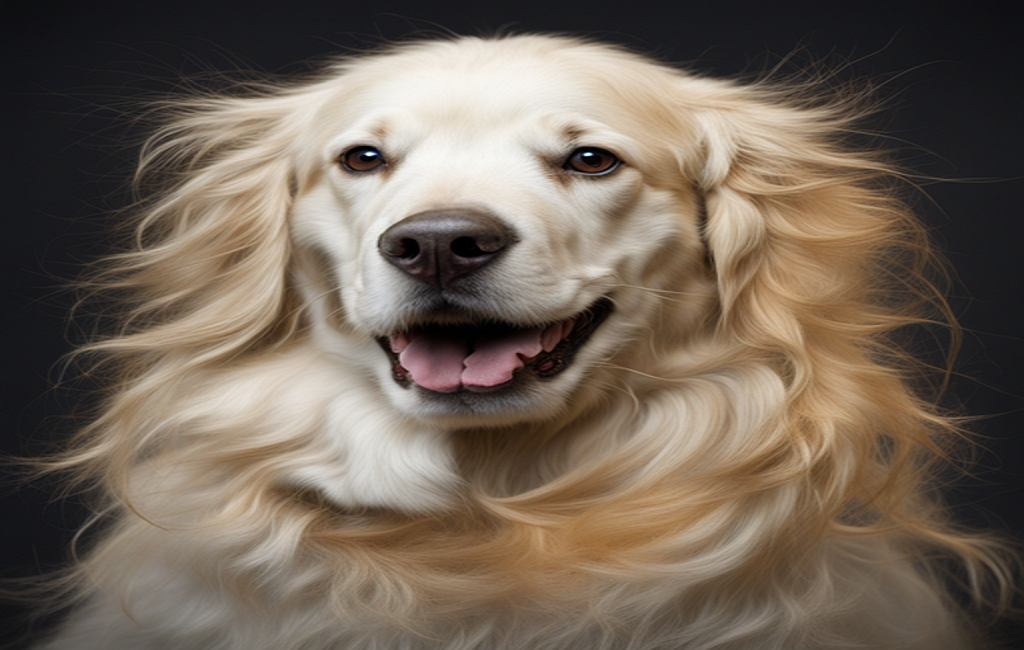
Why it’s important to your dog brush:
1. Encourages Healthy Skin: Your dog brush regularly helps spread the natural oils in their coat, which keeps their skin moist and stops it from getting flaky or dry. It also wakes up the skin and improves blood flow, which makes the coat healthier and glossier.
2. This keeps dogs from matting: Which can be painful for them and hard to get rid of if they have long hair or a thick coat. Dog brush regularly keeps it from getting tangled, which makes grooming your dog easier and less painful.
3. It keeps your house clean: If you have a furry friend, you know how fast their loose fur can make your house look messy. Any time your dog brush, you can get rid of loose hair that might get on your floors or furniture.
4. Time to bond: Dog brush not only keeps them healthy, but it also makes the bond between you two stronger. It gives you and your furry friend quality time to spend together and show them love while keeping them clean and healthy.
5. Keeps you and your dog healthy: When your dog brush regularly, you can look for lumps, bumps, or skin infections. It also lets you check their paws and ears for signs of irritation or infection, which keeps health problems from getting worse.
6. Dogs naturally shed fur: Dog brush regularly can help control it by getting rid of the loose fur before it falls off on its own. If your dog sheds a lot, this can help even more because their coat needs extra care during those times.
7. Less Trips to the Groomer: If your dog brush regularly, mats and tangles are less likely to form, which means you’ll need to take your dog to the groomer less often for haircuts. It saves you time and money, and if your dog doesn’t like being groomed, it makes them feel better too.
Conclusion:
Dog brush is an important part of keeping them clean. It keeps the skin and coat healthy, stops mats and shed hair, and can even help find health problems early on. It also gives you and your four-legged friend quality time to bond.
Make sure you use the right dog brush for your dog’s coat type, and make brushing fun for them by giving them treats and praise afterward. Your dog will not only look good but also feel good if your dog brush it often.
Figuring out what kind of coat your dog has
The fur on your dog’s coat isn’t just a covering. Insulation, protection from the weather, and even communication are some of the many important things it does. Knowing your dog’s coat type is important if you want to take good care of it as a responsible dog owner.
Pet dogs can have a number of different coats, and each one has its own needs and traits. There are smooth coats, double coats, curly or wiry coats, and coats that are a mix of these.
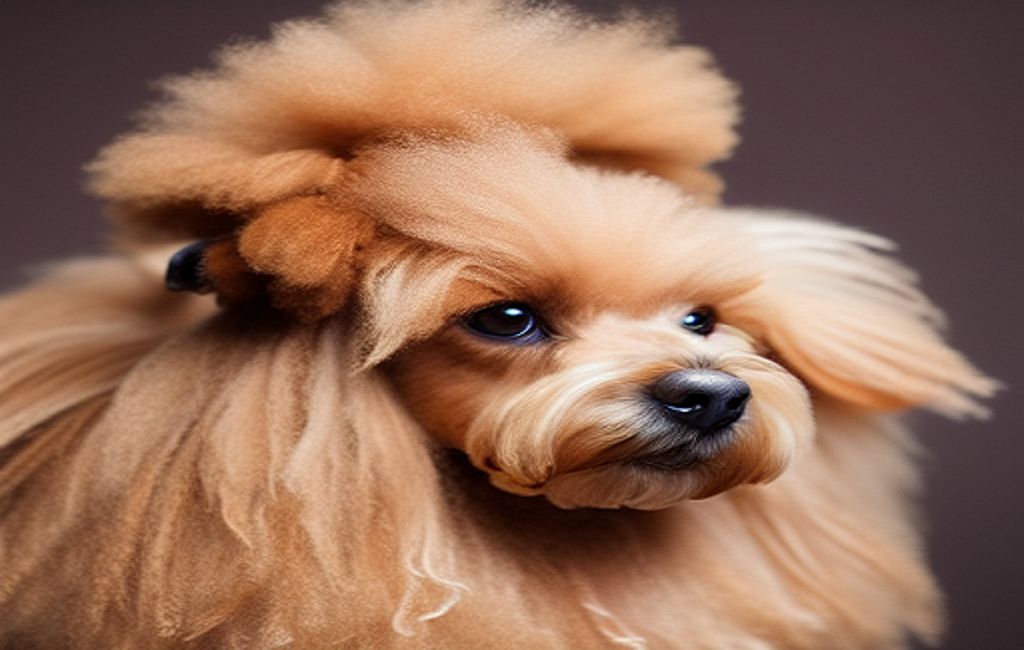
Coats that are smooth:
The hair on a smooth-coated dog is short, flat, and close to the body. Beagles and Doberman Pinschers are two breeds that often have this type of coat. Because they don’t tangle easily, these coats are easy to take care of and don’t need to be dog brush. A simple bristle brush or rubber curry comb can help get rid of extra hair and spread the coat’s natural oils around.
Two coats:
Dogs with two coats have a soft undercoat that keeps them warm and a longer coat that protects them. Golden Retrievers, Huskies, and German Shepherds are all popular dog breeds that have two coats. These dogs need to be groomed often because they shed a lot when the seasons change. It is best to get rid of any loose undercoat hair with an undercoat rake or de-shedding tool before it gets tangled up in the topcoat.
Coats with curls or wires:
Some dog breeds, like Poodles and Terriers, have curly or wiry coats that need different ways to be groomed. While these coats don’t shed like some others, they do need to be trimmed and shaped regularly to keep their shape. A slicker dog brush should be used to regularly brush curly coats, and wiry coats should be hand stripped often to get rid of dead hair.
Mix-and-match coats:
Some dog breeds, like the Shih Tzu and Cocker Spaniel, have coats that are a mix of different types of fur and span different lengths. Regular dog brush with a mix of slicker and pin brushes is good for these dogs. To keep their coat looking neat, they may also need to be trimmed and shaped every so often.
Along with knowing what kind of coat your dog has, you should also notice any changes in how it looks or feels. Any big changes could be a sign of a deeper health problem that needs to be talked over with your vet.
Grooming your dog regularly not only keeps its coat clean and healthy, but it also lets you bond with your dog and find any health problems early on. If you know what kind of coat your dog has and what it needs, you can keep it healthy and shiny all year.
Tool sets for brushing different kinds of coats
The type of coat your dog has will help you choose the best brushing tools for them. It’s important to pick the right dog brush for your furry friend because different coats need different amounts of care and grooming. We will talk about the different types of coats and the best dog brush tools for each one in this section.
1. Coats with short sleeves:
Even though short-coated dogs may not need as much grooming as other breeds, they still need to be dog brush often to keep their coats healthy and shiny. When you have a short coat, a bristle brush or a rubber curry dog brush works great to get rid of loose hair and dirt on top. These brushes also make the skin make more natural oils, which is good for a healthy coat.
2. Coats of a medium length:
Breeds like Golden Retrievers, Cocker Spaniels, and Australian Shepherds have coats that are about shoulder-length and tend to mat if they aren’t brushed properly. A slicker dog brush is the best tool for these kinds of coats. Its fine wire pins get through knots in the fur without hurting it. A shedding blade or de-shedding tool is another choice. This type of tool helps remove loose undercoat hair in dogs with two coats.
3. Coats that are long and smooth:
Long-haired dog breeds like Shih Tzus, Maltese, and Yorkshire Terriers need to be brushed often to keep their soft hair from matting and to make it shine. The best way to dog brush these coats is with a pin or bristle dog brush, which will gently remove tangles without hurting your dog. You should also use a comb to get rid of any knots that won’t come out, and a mat splitter to get rid of tougher mats.
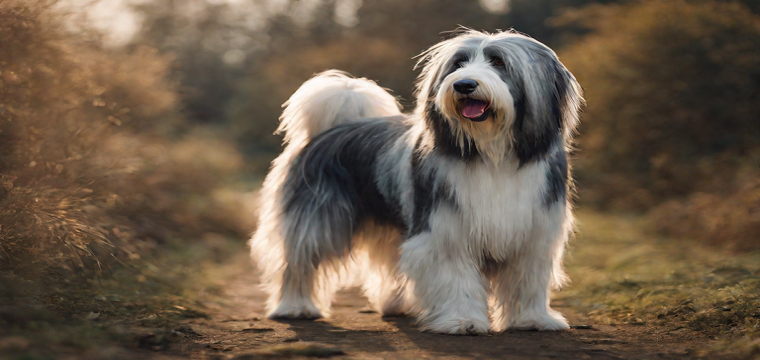
4. Two coats:
Some dog breeds, like Siberian Huskies, Bernese Mountain Dogs, and Chow Chows, have two coats. The undercoat is soft, and the topcoat is longer. To keep their coats from getting matted, these breeds need to be brushed often, especially when they are shedding. For these coats, a slicker brush or shedding blade works best because they get rid of loose fur from both layers without hurting the topcoat.
5. Coats with curls or wires:
For Poodles, Bichon Frises, and Wirehaired Terriers, and other dogs with curly or wiry coats, you need special tools to keep their coats healthy and in good shape. It is possible to get rid of tangles and dirt in curly or wired hair with a pin brush or slicker brush. These brushes can also help the hair’s natural oils shine. You can also use a dematting tool to help break up tough mats without hurting the coat.
It’s important to get the right brushing tool for your dog’s coat type so that you can groom them well and keep their fur from getting hurt or damaged. Brushing your dog’s coat regularly not only keeps it looking great, but it also helps natural oils spread, gets rid of dead hair, and supports a healthy coat. You can get personalized advice from your vet or a professional groomer on the best brushing tools for your dog’s coat type.
Dogs with short hair
Even though short-haired dogs may seem like easy-care pets, they still need to be groomed regularly to keep their coat in great shape. Even though their fur is shorter, these dogs can still lose hair and get tangled if they are not taken care of properly. So, picking the right dog brush for your short-haired dog is very important for keeping them healthy and looking good.
There are different types of brushes for short-haired dogs that you can choose from based on the texture of their coat. Beagles, Dalmatians, Greyhounds, and Chihuahuas are all common dog breeds with short hair. Because each of these breeds is different, the best brush for them would depend on those differences.
Most of the time, a soft-bristled dog brush is best for dogs with smooth or single coats, like Beagles and Chihuahuas. The fine bristles on these brushes will remove loose hair from your dog’s fur without hurting his skin. They also do a good job of spreading natural oils through the coat, which keeps it healthy and shiny.
Dogs with two coats, like Dalmatians and Greyhounds, shed a lot of their undercoats during certain times of the year. Better yet, use a deshedding tool or slicker dog brush on these dogs. These tools remove dead hair from the undercoat without hurting the top coat. Slicker brushes have bent wire pins that are made to easily go through thick coats while also increasing blood flow to the skin to keep it healthy.
The size and shape of the dog brush are two more important things to think about when picking one out for your short-haired dog. Smaller dogs, like Chihuahuas, may need brushes with narrower bristles so that the bristles don’t pull on their skin. Larger dogs, like Greyhounds, can handle brushes with wider bristles.
Regular grooming at least once a week is important for short-haired dogs, no matter what kind of dog brush you use. This will keep their coat looking and feeling its best.
Dogs with long hair
Dogs with long hair are known for having beautiful, thick coats that need to be brushed often to stay healthy and look their best. However, there are so many kinds of dog brush out there that it can be hard to choose the right one for your long-haired friend. This part will talk about the different types of coats that long-haired dog brush have and which brush works best for each.
Before we get into the different types of coats, it’s important to know how important it is to dog brush long-haired dogs regularly. Brushing gets rid of tangles and mats, spreads natural oils through the coat, and lowers shedding. It also lets you spend quality time with your pet and keeps their skin healthy by getting more blood to it.
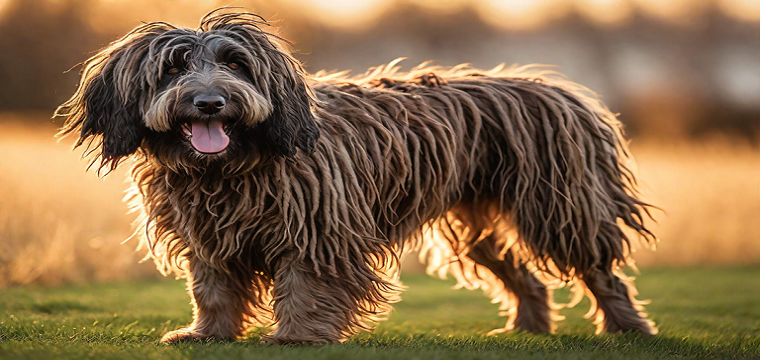
1. Dogs with two coats
Dogs with two coats have a soft undercoat that keeps them warm and a longer outer coat that keeps dirt and water out. Dog breeds like Golden Retrievers, Huskies, and German Shepherds are in this group. These dogs need to be brushed often to keep them from shedding and getting matted. A slicker dog brush or an undercoat rake would work best for dogs with two coats.
There are fine wire pins in a slicker dog brush that pull out loose hair without hurting your dog’s topcoat or skin. An undercoat rake, on the other hand, has teeth that are farther apart so it can get through thick fur and remove dead undercoat without hurting the front coat.
2. Dogs with Curly Coats
Curly dogs, like Poodles, Bichon Frises, and Portuguese Water Dogs, have thick, curly coats that get tangled quickly if they aren’t brushed regularly. These breeds need to have their coats brushed regularly to keep them from getting mats and tangles. For dogs with curly coats, a pin brush works best.
Longer wire or plastic pins on a pin dog brush get deep into the coat to get rid of mats and tangles without pulling on the dog’s skin. It also helps keep the fur healthy and shiny by spreading natural oils through it.
3. Dogs with silky coats
Some dog breeds, like Maltese, Shih Tzus, and Yorkies, have long, silky coats that need to be brushed often to keep them looking great. If you don’t brush these dogs’ fur often, it can get tangled and matted. For dog brush with silky coats, it’s best to use both a slicker dog brush and a bristle brush.
To get rid of mats and tangles in the fur, use a slicker dog brush. A bristle dog brush, on the other hand, will smooth out the coat and spread natural oils for a shiny look.
4. Dogs with Short Coats
Dogs with sparse coats have thin coats that don’t have much or any undercoat. Dogs like Greyhounds, Chihuahuas, and Whippets are in this group. These dogs don’t need as much grooming as other long-haired breeds, but their coats stay clean and shiny if you dog brush every once in a while. For these breeds, the best brush would be one with soft bristles or a rubber curry dog brush.
A soft bristle dog brush will gently remove any loose hair and spread your dog’s natural oils. A rubber curry dog brush can help get rid of dirt and debris in the coat without hurting the skin.
Overall, it’s important to pick the right brush for your long-haired dog based on the type of coat they have. Regularly brushing your dog with the right dog brush will not only make them look great, but it will also help keep their skin and coat healthy. It will be fun for both you and your furry friend if you remember to be gentle and use positive reinforcement when you groom one another.
Dogs with curly or wavy hair
You should be extra careful when grooming wavy or curly-haired dogs, which are also called “woolly” or “fleece”-coated dogs because of their unique coat. It is common for these dog breeds to look shaggy because their fur has curls and waves in it. These coats are pretty and fun to style, but they need to be cared for regularly to stay healthy and knot-free.
If you have a dog with wavy or curly hair, it’s important to find a dog brush that will effectively detangle and prevent matting without hurting the dog’s coat. Slicker brushes and pin brushes are the two main types of brushes that work best for these breeds.

Slicker brushes are great for getting rid of mats and loose hair in coats that are curly or wavy. This type of dog brush has fine wire bristles that are slightly angled so that you can gently dog brush your dog without pulling on its skin. The bristles go deep into the thick coat and get to all the places that are hard to get to where tangles can happen.
It’s important to be gentle when using a slicker dog brush with wavy or curly hair and not put too much pressure on them, as this could make them feel pain. Instead of frantically combing through the whole coat at once, work on smaller sections at a time and gently get rid of any knots from the very ends of the hair to the very beginning.
Another great choice for dogs with wavy or curly hair is a pin dog brush. These brushes have wide-spaced pins with rounded ends that glide through the fur without damaging it. If you brush your dog every day, these brushes will help get rid of loose hair and spread natural oils throughout the coat, making it look shiny and healthy.
When you use a pin dog brush to style your hair, you should focus on small sections at a time and make long sweeping motions in the direction of hair growth. This will help keep fine hairs from getting pulled or broken.
Along with regular brushing, wavy or curly-haired dogs may also benefit from having their coats trimmed and easy to handle every couple of weeks. These dog breeds can keep their beautiful waves or curls as long as they get the right care. Other dogs will be jealous of them.
Dogs with two coats
Dogs with a double coat have a special kind of fur that has two layers: an outer coat and an undercoat. The guard hairs on the dog’s outside coat are longer and rougher. They protect the dog from dirt and water. On the other hand, the undercoat is softer and denser, and it keeps the dog warm.
Huskies, Golden Retrievers, Samoyeds, and Collies are all double-coated breeds. Regular grooming is needed for these breeds to keep their coats healthy and free of mats and tangles. These breeds may also shed less if they are brushed regularly and with the right brush.
There are a few important things to think about when picking out a dog brush with a double coat:
1. Type of bristles: To get to the undercoat under a double-coated dog’s thick fur, you need a brush with firm bristles. Soft bristles might not be able to get rid of dead hair or spread natural oils around the skin well enough.
2. A slicker brush has fine wire pins that are close to each other: This makes it great for getting rid of mats and loose hair on both layers of the coat.
3. Undercoat rake: This tool is made to get rid of dead hair in the undercoat without hurting the top layer of fur. It has long teeth that can get into the thick undercoat and pull mats out of it.
4. Shedding blade: This tool is shaped like a small horseshoe and has dull teeth on one side. It is used to get rid of dead undercoat and loose hair without cutting or hurting the top layer.
Always brush your dog gently, and never pull on the fur. This can make your dog feel bad. To keep their skin from getting scratched, it’s also important to pick a brush with rounded tips.
Not only does brushing your double-coated dog’s fur look good, it also helps keep the skin and coat healthy by spreading natural oils around and getting rid of dirt and other debris.
How to pick out the right brush
When you brush your dog, it’s important to use the right brush so that the coat stays healthy and shiny. But there are so many choices on the market that it can be hard to pick the right one for your furry friend. You can choose the right brush for your dog’s coat type by keeping these tips in mind:
1. Find out what kind of coat your dog has.
It’s important to know what kind of coat your dog has before you start looking for the right brush. In general, coats come in four different types: short, medium, long, and wire-haired. Dogs with short hair, like Labradors and Beagles, have smooth, silky fur that doesn’t need to be brushed often. Long-haired breeds, on the other hand, like Golden Retrievers and Shih Tzus, need to have their fur brushed often.
2. Think About The Types of Bristles.
Brushes with different types of bristles are best for different hair types. For example, soft bristles are best for short hair, while stiff bristles are best for long hair. Australian Shepherds and Huskies, which have fur that is about shoulder-length, should have a brush with both soft and stiff bristles.
3. Find one that is the right size and shape.
The shape and size of the brush are also very important for getting a good groom. Smaller dogs, like Pugs or Chihuahuas, should use a small brush. Bigger dogs, like Great Danes or Saint Bernards, should use a large flat brush. The shape of the brush should also fit your dog’s needs. For example, round brushes are good for Poodles and other dogs with curly coats.

4. Make sure the brush is good.
It might seem pricey to buy a good brush at first, but it will save you money in the long run. If you buy a cheap brush, it will break easily and hurt your dog’s coat. Choose materials that are strong, will last a long time, and won’t hurt your dog’s skin.
5. Think about how sensitive your dog is.
When grooming, some dogs need extra care because their skin is sensitive. For this reason, you should choose brushes with natural bristles over ones with synthetic ones. Natural bristles are kinder and softer on the skin, so they are less likely to irritate or hurt it.
6. Choose brushes with more than one use.
A multi-functional brush that works with different coat types might be a good idea if you have more than one dog with different coat types. Not only will this save you money, but it will also help you get ready faster.
7. Don’t forget about grip and comfort.
Last but not least, think about how the brush will make you feel when you’re choosing one for your dog. Grooming can take a while, and it can be hard to hold on to a brush that isn’t comfortable or is slippery. To make grooming easier and more comfortable, look for brushes with handles that are well-shaped and easy to hold.
Finally, picking the right brush for your dog depends on many things, including the type of coat, the bristle type, the size and shape, the quality, the sensitivity, the functionality, and the comfort. Do your homework and think about these things to find the best brush for your dog’s coat that will keep it healthy and shiny.
Type of bristle and length
One of the most important things to think about when brushing your dog’s fur is the type and length of bristles. It’s important to pick a brush that works well with your dog’s coat type and thickness because each breed is different.
There are different kinds of bristles, from soft and bendy to stiff and rough. There are a few common types of bristles, and here are some coats that work best with each one:
1. Pure Bristles: These bristles are made from animal hair, like horse or boar hair. If your dog has a sensitive coat or a puppy with fine fur, these are great for them because they are soft and gentle on the skin. In addition, they help the coat’s natural oils get to all parts of it, which gives it a healthy shine.
2. Synthetic brushes: Some synthetic brushes are stronger than natural ones because they are made from nylon or plastic. They are great for getting through thick fur and getting rid of knots, so dogs with longer or thicker coats can use them.
3. Wire Bristles: These brushes have stiff wire bristles, as the name suggests. They work well on dogs with medium to long hair. You can choose whether the pins on the brush are round or curved, based on how gentle you want to be with your dog’s fur.
4. Rubber Bristles: These are thin, soft pieces of rubber that touch your dog’s skin as you brush their fur. Short-haired breeds do well with this type of brush because it helps spread natural oils and gets rid of loose fur and other waste.
Besides the type of hairs, you should also think about how long they are. For dogs with short hair, brushes that are shorter work best. For dogs with medium to long hair, bristles that are longer work best.
The cut and shape of the brush
The way the brush is shaped and designed can also affect how well it cleans your dog. Here are some popular types:
1. Slicker brushes are great for getting rid of knots and mats: Because they have fine, short, close-together wire bristles. They are very helpful for breeds with long hair.
2. Brushes with bristles: These brushes have bristles made of natural or man-made materials, as the name suggests. They work on all types of coats and help oils get to all parts of the coat, which gives it a healthy shine.
3. Pin brushes have longer pins than slicker brushes: And are great for getting rid of dirt that is deep in your dog’s coat. They work well on clothes that are thick or stiff.
4. Shedding blades and rakes: are special tools made to get rid of dead hair from your dog’s fur. They have sharp metal teeth that grab loose hair and pull it off gently and with little effort.
For the most part, the brush should be the right size and shape for your dog’s coat. Think about the places that need more care, like behind the legs or around the ears, and pick a brush that is easy to get to those areas.
Comfort and hold
It’s also important to think about how comfortable and easy it is for you to brush your dog. Make sure the brush you pick has a handle that you can hold easily. An practical design is best. This will keep your hand from getting tired quickly while you brush your dog.
Also, look for brushes with non-slip handles or rubber grips so that the brush doesn’t slip out of your hand while you’re brushing.
You should also think about how your dog will feel about the brush. Certain brushes have pointy or bristly parts that can hurt your skin if you press them too hard. Pick a brush with soft bristles that won’t hurt your dog’s skin.
Needs for grooming
Lastly, think about what kind of cleaning your dog needs when you pick a brush. Some dogs may need to be brushed every day to keep their fur from getting matted and tangled, while others may only need to be groomed once a week.
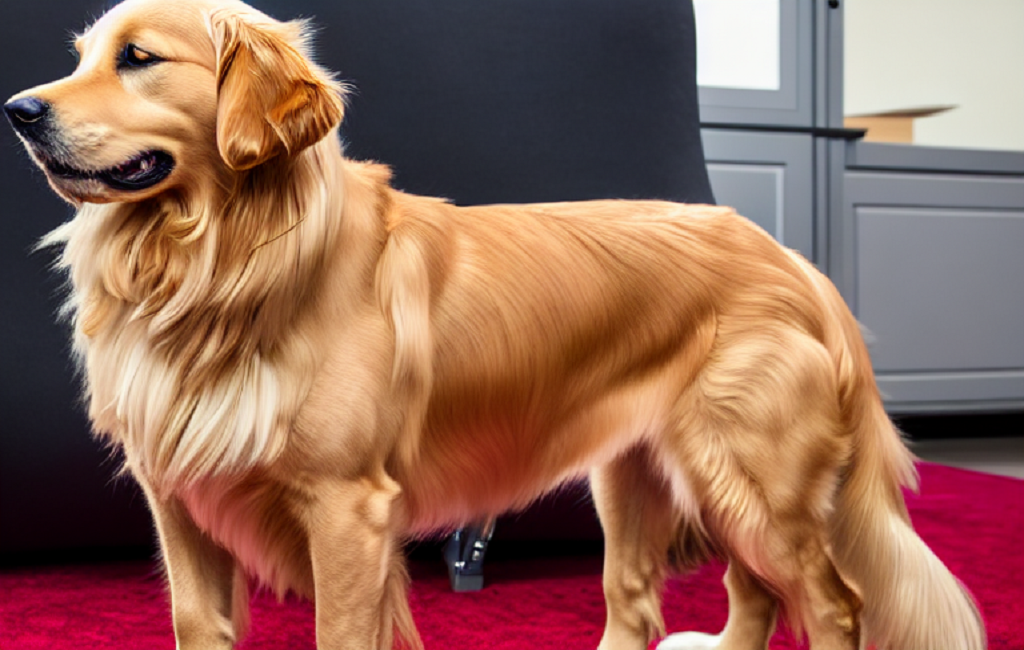
Ask a professional groomer or your veterinarian for help if you’re not sure what kind of brushing plan is best for your dog.
Also, think about any skin or hair problems your dog might have. As an example, a brush with natural hair may help dogs with Allergan or dry skin by spreading their oils out properly and making their skin feel better.
Finally, picking the right dog brush for your dog’s coat is very important for keeping it looking healthy and well-groomed. When making your choice, think about the type and length of bristles, the shape and design of the dog brush, how comfortable it is to hold, and your dog’s unique cleaning needs. If you get the right dog brush, cleaning your dog can be a fun way for you and your dog to bond.
How big the brush is
To pick the best dog brush, the size of the dog brush is one of the most important things to think about. How well the brush gets rid of dead hair and keeps your dog’s coat healthy and shiny will depend a lot on its size. This part will talk about how to figure out what size dog brush is best for each type of coat.
1. Long Jackets:
For dogs with long hair, like Golden Retrievers, Collies, and Afghan Hounds, it’s best to use a big brush with long bristles. It’s possible for this brush type to get through the thick finish and get rid of any knots or mats that have formed. Also, make sure the brush you choose is big enough to cover a lot of ground when you brush these breeds.
2. Coats with short sleeves:
Few dog breeds need the same kind of dog brush because their coats are short, like Labrador Retrievers, Boxers, and Beagles. For these dogs, a medium-sized slicker brush or shedding blade would work best because they can get rid of free fur without hurting them.
3. Two coats:
Some dog types, like Huskies, Samoyeds, and Malamutes, have two coats: a soft undercoat and a rough covering. It’s best to use a tool that has both bristles and pins on one side for these kinds of coats. The brush side can help clear free hair from the undercoat while the pin side can gently untangle any knots on the top coat.
4. Coats that are smooth:
Dogs with smooth hair like Dachshunds, Greyhounds, and Whippets require a brush that is gentle on their sensitive skin. A soft bristle brush or rubber cleaning mitt would be the most ideal as they can remove dead hair without hurting their skin.
5. Curly Coats:
Breeds with thick coats like Poodles, Bichon Frises, and Irish Water Spaniels need regular brushing to avoid matting and knots. A slicker brush or a pin brush with widely spread pins is suggested for these types of coats.
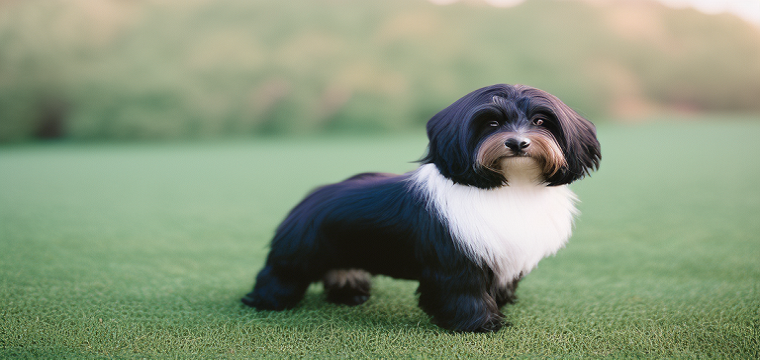
6. Wire Coats:
Wire-haired types such as Terriers and Schnauzers have rough, thick coats that require regular stripping to keep their shape and structure. A stripping comb or blade is important for these breeds as it can easily remove dead hair while maintaining the tough structure of the coat.
7. Mix-and-match coats:
Some breeds have a mix of different coat types, such as the Cocker Spaniel which has both long and short fur on its body. For these dogs, it is best to use a mix of brushes – a slicker brush for the longer areas and dog brush tool for the shorter areas.
In addition to considering the size of the brush, it is also important to choose one with a soft handle that fits well in your hand. This will make brushing lessons more fun for both you and your dog.
Grip and handle shape
When it comes to picking the right dog brush, many people tend to focus solely on the type of bristles or comb that will work best for their pet’s hair. However, another important factor that should not be ignored is the grip and handle shape.
Having a comfy and natural grip on your dog brush is important for both you and your pet friend. It can make the cleaning process faster, more efficient, and less tiring for you while also ensuring your dog’s safety and comfort.
There are several things to consider when it comes to grip and handle design, including size, material, feel, and shape. Let’s take a closer look at each of these elements so you can choose a dog brush with a grip and handle that works best for you and your pet.
Size
The size of the brush’s handle is an important factor in terms of both comfort and control. A handle that is too small may cause hand tiredness or cramps during extended brushing sessions while one that is too large may be difficult to hold onto properly.
Material
Dog brush come in a range of materials such as wood, plastic, rubber or silicone. Each has its pros and cons when it comes to grip and handle design. Wooden grips tend to offer a more traditional feel but may become slippery if they get wet from water-based cleaning products.
Plastic handles are usually lightweight but may not provide as solid of a grip as other materials. On the other hand, rubber or silicone grips offer excellent traction even when wet , making them ideal for use during swimming.
Texture
The feel of the grip is also an important factor to consider. A smooth, shiny finish may be slippery and difficult to grip while a rough or curved handle can provide better support.
Shape
The form of the handle can affect how comfy and easy it is to hold. Some dog brushes have straight handles, while others have curved shapes that fit easily in the hand. It’s always a good idea to test out the brush in person if possible to see which form works best for you.
In addition to considering these elements, it’s also important to make sure that the brush feels balanced and well-constructed. A strong and well-designed grip and handle can make all the difference in ensuring a nice cleaning experience for both you and your pet friend.
Popular dog brush brands based on coat type
Choosing the right dog brush can be stressful with so many choices available in the market. One important thing to consider when choosing a dog brush is your furry friend’s coat type. Different breeds have different coat types, and using the right dog brush can make a huge difference in keeping their coat’s health and look.
To help you narrow down your choices, we’ve collected a list of popular dog brush names based on their fit for specific coat types:
1. Slicker brushes for long-haired coats: Popular names like Hertzko, Chris Christensen, and JW Pet are known for their high-quality slicker brushes that work wonders on long-haired coats. The fine stainless steel pins of these brushes gently remove tangles and mats without hurting the fur or causing pain to your pup.
2. Bristle brushes for short-haired coats: Short-coated types like Labrador Retrievers, Beagles, and Corgis require regular cleaning to keep their hair shiny and healthy. Brands like FURminator, KONG, and Safari offer bristle brushes with soft yet strong bristles that effectively remove free hair and spread natural oils throughout the body.
3. Double-sided brushes for thick double-coats: Breeds like Huskies, Golden Retrievers, and Chow Chows have double-coats that require special care when it comes to cleaning. A double-sided comb from Andis or Four Paws is an excellent choice as it has both wide-spaced teeth for detangling thick fur and fine-spaced teeth for removing loose hair.
4. De-shedding tools for heavy shedders: If your dog has a thick coat that sheds heavily, using a de-shedding tool can greatly reduce the amount of free hair in your home. Popular choices from names like Furminator and Pet Portal have carefully designed blades that easily remove loose hair without hurting the finish.
5. Dematting tools for tangles and mats: Dogs with long, wavy or thick hair, knots and mats can be a common problem. Brands like Chris Christensen and Oster offer dematting combs with sharp blades or sharpened teeth that successfully untangle knots without pulling on the fur.
It’s crucial to choose a dog brush that is suited to your dog’s specific coat type to ensure effective brushing and minimal pain. Consider speaking with a professional groomer to determine which type of brush will work best for your pup.
Recommendations for Choosing the Right Dog Brush
1. Know Your Dog’s Coat Type: The first step in picking the right dog brush is to understand your dog’s coat type. This will help you decide which dog brush will be most effective and suitable for your furry friend. Some common coat types include short, medium, long, double, and stiff coats.
2. Consult with a Professional Groomer: If you are unsure about your dog’s exact coat type or have any other worries related to cleaning, it is always best to seek help from a professional groomer. They can provide useful insights on the kind of dog brush that would work best for your dog’s coat type and suggest goods that are known in the industry.
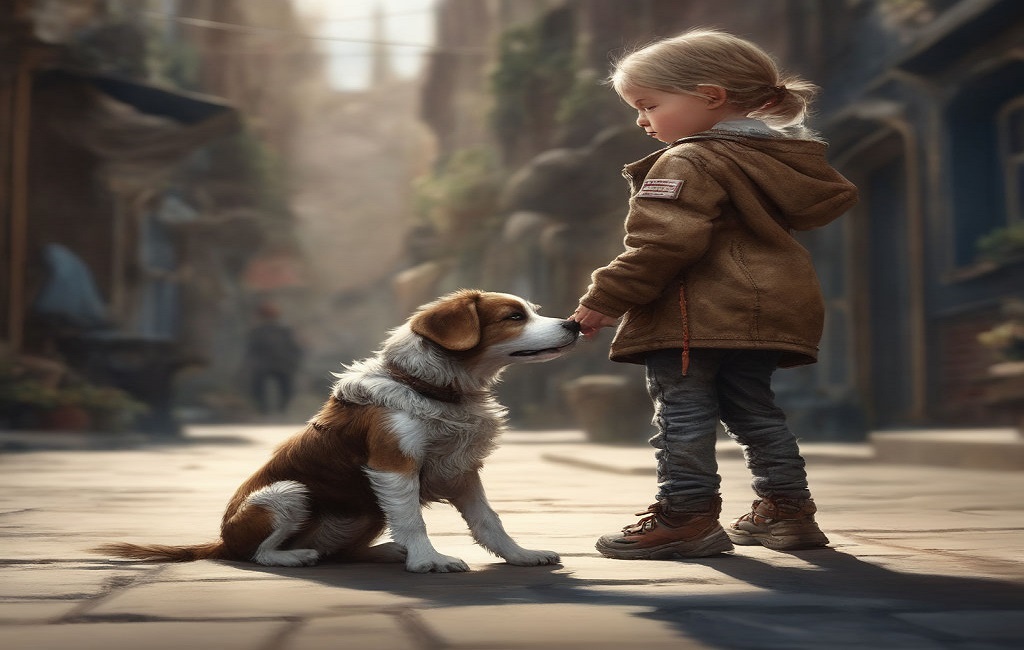
3. Consider Your Dog’s Sensitivity Level: Dogs with sensitive skin or those who do not enjoy brushing sessions may require special care when choosing a dog brush. Look for choices that are gentle on their skin and have soft brushes to avoid causing any pain or soreness.
4. Invest in Quality Brushes: It might be tempting to opt for cheaper brushes, but investing in good quality brushes is important for keeping your dog’s coat health and reducing hair. High-quality brushes are made to successfully remove loose hair without pulling or hurting the fur.
5. Choose Appropriate Bristle Types: Bristle types vary based on the coat type they are designed for and can greatly impact how well the dog brush works on different kinds of coats. For example, wire pin brushes are ideal for stiff coats, while slicker brushes work well for cleaning free hair and clumps in long coats.
6. Consider Your Dog’s Activity Level: If your dog is highly busy and spends a lot of time outdoors, they may require more frequent brushing to remove any dirt or knots. In this case, look for brushes that are lasting and easy to clean.
7. Look for Multi-Functional Brushes: Some brushes come with extra features such as de-shedding or massage capabilities. These multi-functional brushes can save you time and money while offering multiple benefits for your pup’s body.
8. Check Reviews: Before buying a dog brush, take some time to read reviews from other pet owners who have used the product. This will give you an idea of how effective the brush is and whether it would be good for your dog’s coat type.
9. Test the Dog Brush on Your Dog: Once you have narrowed down a few choices, it is always best to try out the brush on your dog before making a purchase. This will help you to see how your dog responds to the brush and whether it successfully removes loose hair without causing pain.
10. Regular Maintenance of Your Dog Brush: Finally, remember to regularly clean and keep your dog’s brush to ensure maximum efficiency and life. Keeping the brush clean will also prevent any bacteria or germs from building up and possibly causing harm to your dog’s coat.
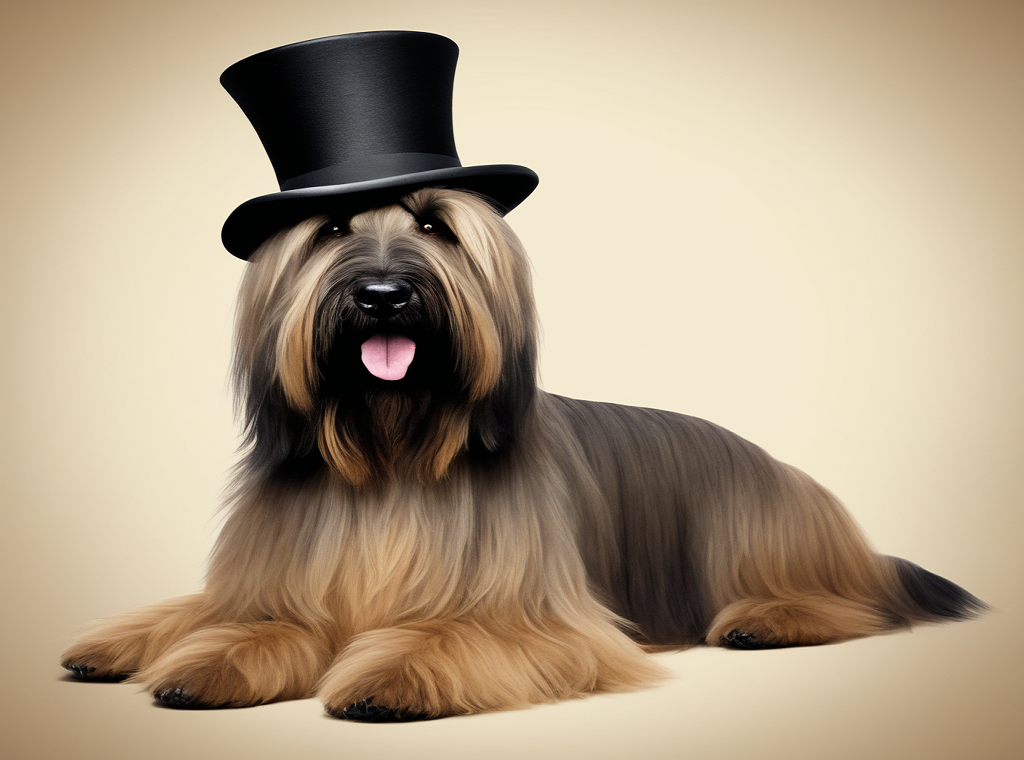
1 thought on “How to Pick the Right Dog Brush Based on the Type of Coat”